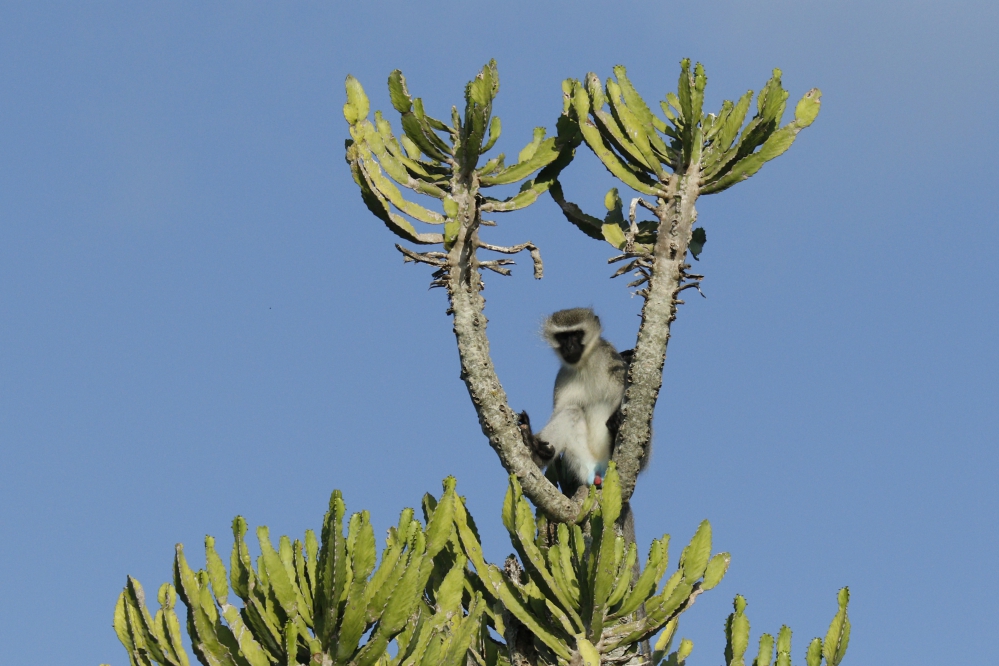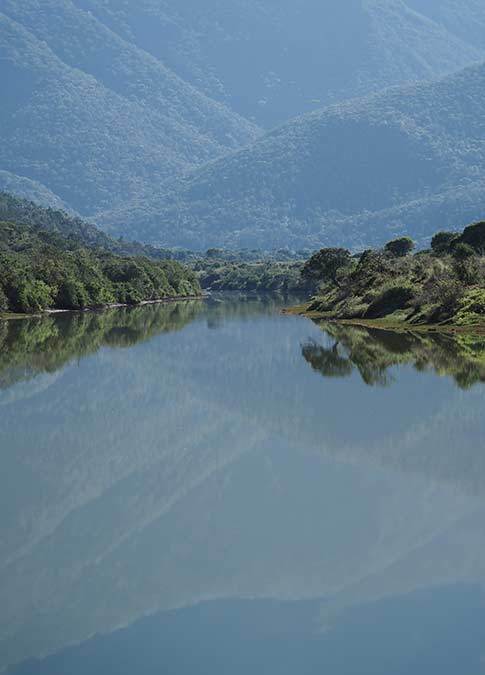Do Not Feed the Monkeys
This is an important message to all safari guests: Please do not feed the monkeys or any wildlife at Kariega Game Reserve.
All five of our Kariega safari lodges are surrounded by nature and wild animals can sometimes visit the lodges, chalets and suites. Although there are fences around most of our lodges, it is common for small antelope (like the blue duiker and bush buck) to find their way in to feed on the vegetation. These animals are beautiful to watch, along with the variety of striking birds. The animals and birds are wild and we ask that guests do not feed them or try to touch them.
We also get vervet monkeys around the lodges. Recently we have found out that guests have been feeding these monkeys, which has caused them to become used to the idea that humans provide food. We would like to ask all guests never to feed the monkeys, or any wildlife during their stay with us.
By feeding vervet monkeys you are putting their lives at risk as human food will make them ill. There is enough natural food for them in the wild and they do not need to be fed by humans. The idea that, "I will only do this once," in reality means that one monkey may be fed by someone everyday. Please help protect the wildlife around the lodges by never feeding or interacting with them.

Vervet Monkey Facts
The vervet monkey or blou aap (meaning blue monkey in Afrikaans), is the most widely spread species of monkey in southern Africa. In German it is called a Grüne Meerkatze meaning green meerkat! Vervet monkeys have grey coats and black faces. The skin on their bodies has a slightly blue tinge to it.
Male vervet monkeys display very impressive colouration on their reproductive parts. They have a red penis and bright blue scrotum! The more dominant the male, the more colourful he is. This is thought to impress females, even at a distance, and also show off his dominance to other males who might want to compete for a chance with the females.
Vervet monkeys live in large family groups or troops which can range anywhere from 10 to 50 individuals. The troop is made up of females (who always stay with their family group), infants and juveniles, transferred males from other troops and dominant males. The males' hierarchy is determined by age, fighting abilities and who they are friends with. Females' hierarchy is based on maternal social status.

Who Feeds on Monkeys?
Vervet monkeys are perfect protein snacks for predators including leopards, eagles, pythons and baboons. Other less likely predators include jackals, smaller raptors and lions. While the troop is feeding on the ground, in the trees or brush, there is always a sentinel or individual on lookout duty. This monkey sits in the tallest tree or lookout point and keeps an eye out for anything suspicious while the others forage for food.
As soon as danger is spotted the sentinel will shout a loud alarm call to warn the others in the troop to immediately move to safety. The most amazing thing about this is that there are different alarm calls for different predators. If it is an eagle flying over the sentinel will give a call to warn of a danger from above which will make the troop rush into the dense brush to escape the eagle. If the danger is on the ground the alarm call will tell the troop to rush for higher areas to escape a predator like a leopard. Younger individuals that are still learning the ropes will often get this wrong and will be seen as unreliable by the troop. They will be mentored by more experienced individuals who will do sentinel duty with them to make sure they don't cause someones accidental death.

Did you see vervet monkeys during your safari at Kariega Game Reserve? Please share your experiences with us by commenting below. You can also share your vervet monkey photos with us via Facebook, Instagram and Twitter.









